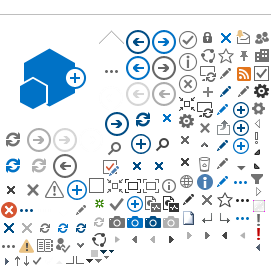SANCOR Newsletter Issue #170: June 2002
A DAY IN THE LIFE OF A NEMATODE HUNTER IN
SOUTH AFRICA
Martin G.J. Hendricks
Department of Zoology, University of the Western Cape, Private Bag X17, Bellville, 7535, Republic of South Africa
The study of free-living marine nematodes along the Southern African coast is largely neglected. The first species descriptions were reported from collections made in Luderitz Bay, Namibia, by Von Linstow (1908) and Steiner (1918). Between 1960 and 1990, the only marine nematode contributions of note were those by Inglis, Coles, Furstenburg and Vincx. A number of ecological studies in particular those by McLachlan et al highlighted the importance of nematodes in meiofaunal assemblages. However, in all those and other studies nematodes were all lumped together and not described.
Towards the end of 1998 a research initiative was launched to increase the understanding of marine nematode diversity in South Africa. Saldanha Bay, along the west coast of South Africa, is influenced by anthropogenic effects such as a raft mussel – culture industry, fish processing factories, an iron ore loading jetty and urban development. I decided to investigate the effect of mussel rafts on nematode communities in Saldanha Bay.
Apart from my undergraduate knowledge of parasitic nematodes and some free-living terrestrial taxa, I knew nothing of the marine variety. I was subsequently packed off to London in 1999 where Nicola Mitchell, Tim Ferrero, John Lambshead, Fred Wanless, Adam Cook and Caroline Brown all contributed to open my eyes to a wonderful new world of squiggly worms. I spent six months at the Natural History Museum, London, and upon returning to South Africa I was able to set up a completely new laboratory. This initial visit to NHM was followed by two shorter visits in 2000 and 2001. These visits coincided with the Darwin Initiative Workshops held in Plymouth- but that is another story.
My supervisor at the University of the Western Cape is Prof. Mark Gibbons while Dr. Lambshead is the other supervisor. I am registered as a part-time Ph.D. student since I hold a fulltime post as Chief Scientific Officer in the Zoology Department at UWC. I realized from the onset that the project would require careful planning and sheer hard work (sticking the nose to the grindstone) and I would hate to have my supervisors breathing down my neck if I procrastinate. I therefore wish to share a typical unedited day in my life with you.
It is Monday morning and at 06:00 –07:00: Rise and sort out family matters. Although the University is only 9 km away from home I leave at 07:00 in order to avoid the traffic congestion. Start working on nematodes immediately. I am drawing nematodes from a sandy sample and the exercise continues until 08:45.
09:00 – 09:30: Convene a weekly laboratory meeting with academic support staff.
09:30 – 10:00: Organise a series of practical classes with Dr Lorna Holtman (lecturer)
10:00 – 12:00: Perform a variety of functions including meeting students and testing apparatus for sample analysis of Robben Island Pipeline Survey, urgent meeting with technical workshop on alarm system for controlled environments rooms, sort out slides for first year meiosis practical and check a student contribution before submission to the University’s weekly paper.
12:00 I do not feel well- influenza –and decide to have lunch a bit earlier than usual and then return to nematode laboratory to continue with the drawings started in the morning.
14:00 – 15:00: Conduct Health and Safety inspection with Rashieda Toefy (Senior Scientific Officer) and write the report for H&S subcommittee meeting.
15:00 – 16:00: Sort out my e-mails for the first time; react to some, delete most and is immediately called to advise Samantha Hopkins (M.Sc. student) in the histology laboratory on some of her staining techniques pertaining to the skin diseases of West African frogs.
16:00: Time to continue with my nematode project. Today is a struggle because of the effects of influenza, but I still manage to work until 20:30. (Normally I work until 21:30 at least three times a week and never leave campus earlier than 18:00 on other days). During the period I took a short break to watch the International Space Station with Mark Shuttleworth, South Africa’s first cosmonaut, pass by.
At home I have supper and still need to read the minutes and proceedings of a South African Network forCoastal and Oceanographic Research meeting to be held the following day. The thousands of nematodes keep me on my toes and I know that I will complete the study in the shortest possible time –mature student or not.

